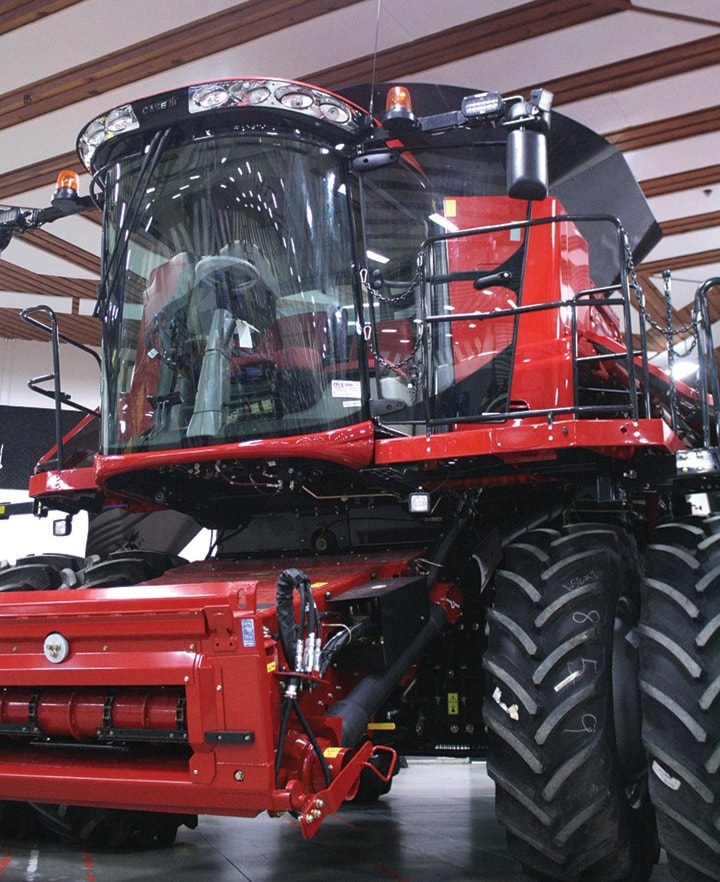Submitted
According to the Canadian Agricultural Injury Reporting program, 13 per cent of farm-related fatalities across Canada are due to traffic, and most involved tractors.
During the busy spring season, farmers often travel long distances between fields, and this requires transporting equipment on public roads throughout rural Alberta. Farm equipment is oversized and slow compared to other vehicles using the roads and, when certain procedures are not met, can lead to collisions and other incidents.
“To avoid traffic collisions between motorists and farm equipment, farmers should ensure their equipment is clearly visible and follows all the regulated requirements for lighting and signage,” says Nicole Hornett, farm safety specialist, Alberta Agriculture and Forestry (AF). “Motorists also need to do their part by driving defensively, like slowing down near farm equipment, keeping their distance and watching for farms where equipment may be turning.”
The number one cause of farm-related fatalities in Canada is machinery roll overs. “To minimize the risk of severe injury or death, operators should be adequately trained to drive the machinery and all tractors should be equipped with roll-over protective structures (ROPS),” says Hornett. “Unless safe to do so, resist the urge to move closer to the ditch to let motorists pass, even just one wheel into the gravel can cause the driver to lose control and roll the equipment. In order for a ROPs to be effective, operators also need to wear the seatbelt.”
Visibility while on public roads is essential. Check that all lights are functional and clean. Use reflective tape and reflectors in the event that large equipment is required to travel in dim lighting conditions. In Canada, reflective material should be red and white strips. You can purchase reflective tape in kits or by the foot at local farm or hardware stores.
Be sure to clean farm equipment prior to transportation to minimize the risk of collision due to poor visibility. Dust-covered signage and lights make farm machinery less visible to motorists and dust-covered windows and mirrors on machinery causes poor visibility for the operator, who may not see oncoming traffic.
“It’s important to note that regulated requirements for lighting and signage on public roadways include the use of a slow-moving vehicle (SMV) sign,” explains Hornett. “The SMV sign must be securely mounted, clean and not faded. It must be positioned on the rear of the tractor or towed implement and clearly visible.
For more information on the safe transportation of farm equipment on public roads, see AF’s Make it Safe, Make it Visible or go to www.agriculture.alberta.ca/farmsafety for more information on farm safety.
